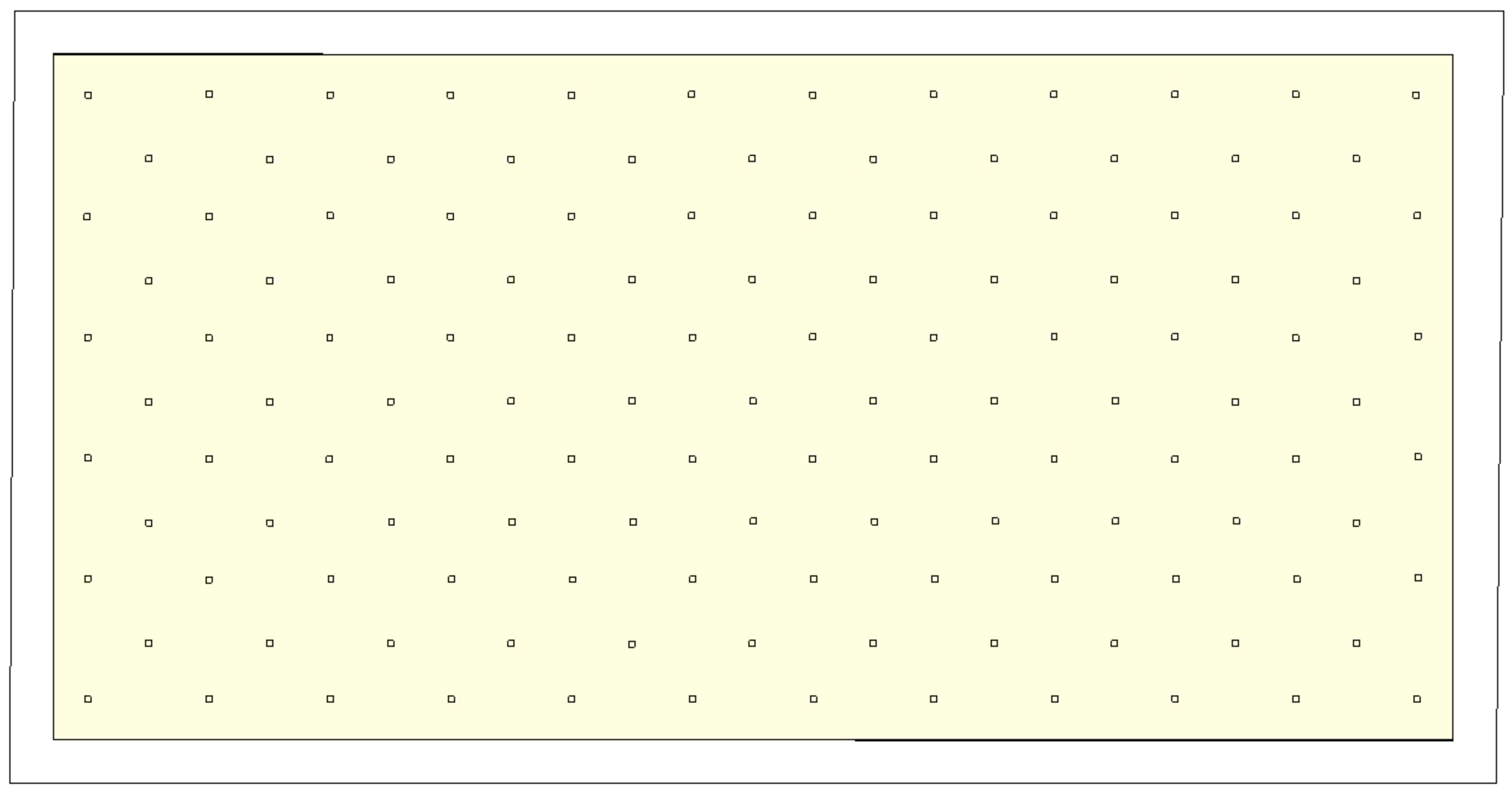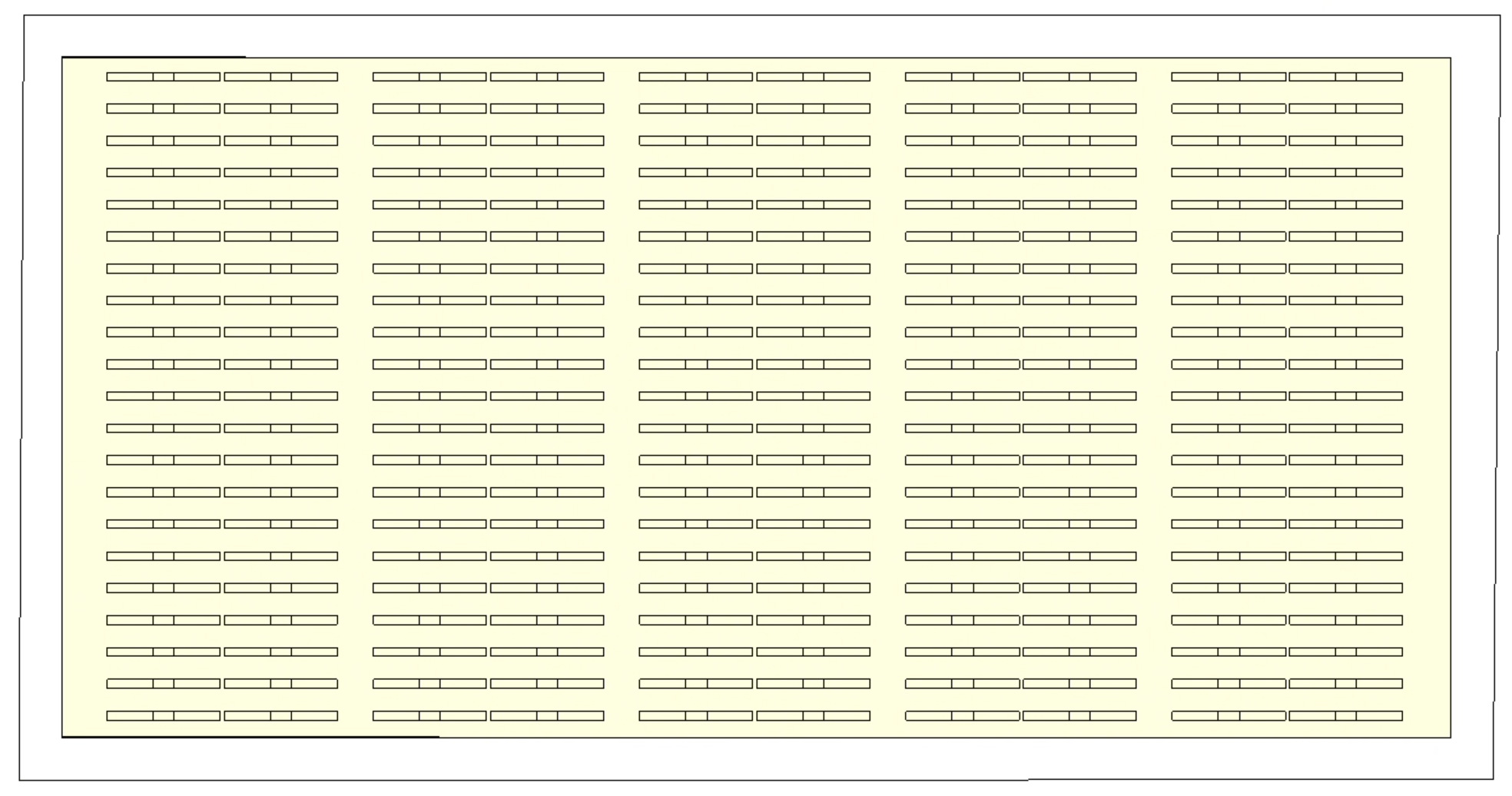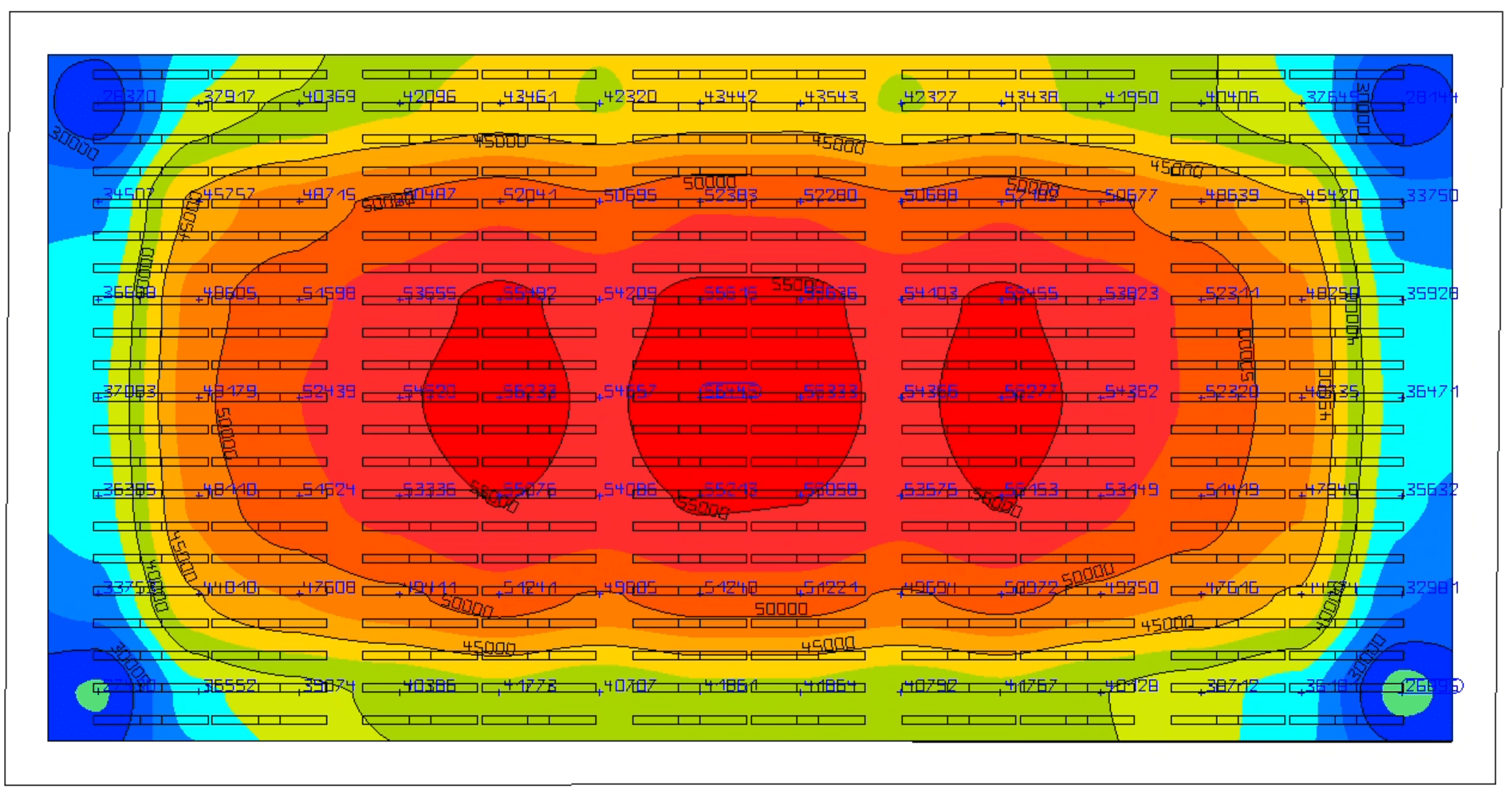Comparative Analysis of Horticultural Lighting Systems
Centered-Square COB LED System
COB LEDs (Samsung BXRE-30E6500-C-83) are arranged in a centered square number sequence. No secondary optics are used. Layout is defined by the centered square number integer sequence (Online Encyclopedia of Integer Sequences: A001844):
\(C(n) = (2n-1)^2\)

Figure 1: Centered Square COB LED Arrangement.
Uniform-Matrix Gen 2 System
Samsung SI-B8T502560WW modules are placed in a standard rectangular matrix layout, commonly used in commercial applications.

Figure 2: Uniform Matrix Arrangement of Gen 2 Modules.
Simulation Approach
Photometric data (.ies files), geometric arrangements, and surface reflectances were used in DIALux to simulate lux distributions. Results were then converted to PPFD using Spectral Power Distribution (SPD)-derived conversion factors.
Lux to PPFD Conversion
The conversion from illuminance (lux) to photosynthetic photon flux density (PPFD, in μmol m−2 s−1) uses the LED’s normalized spectral power distribution I(λ) over a wavelength range [λ1, λ2]. In our approach, PPFD is calculated as:
where:
- h is Planck’s constant,
- c is the speed of light,
- NA is Avogadro’s number,
- the factor
106converts moles to micromoles, - and the λ×10−9 term converts nanometers to meters.
Illuminance, E (in lux), is given by:
where V(λ) is the CIE photopic luminous efficiency function and 683 lux W−1 is the maximum luminous efficacy of radiation.
Therefore, the lux-to-PPFD conversion factor, C (in μmol m−2 s−1 lux−1), is:
Conversion factors used:
- Samsung Gen 2: 0.0179 μmol m−2 s−1 lux−1
- Samsung COB: 0.0138 μmol m−2 s−1 lux−1
Results

Figure 3: Novel System PAR Map

Figure 4: Conventional System PAR Map

Figure 5: Novel System Heatmap

Figure 6: Conventional System Heatmap
| Metric | Novel System | Conventional System |
|---|---|---|
| Average PPFD | 838.98 | 830.55 |
| RMSE | 10.28 | 138.10 |
| DOU (%) | 98.77 | 83.37 |
| MAD | 7.99 | 119.40 |
| CV (%) | 1.23 | 16.63 |
| Min/Max PPFD | 0.94 | 0.48 |
Mathematical Representation of Metrics
Here, we define the mathematical formulations used to calculate the metrics presented in the table above. Let Pi represent the PPFD value at the i-th measurement point, and let n be the total number of measurement points (here, n = 98).
-
Average PPFD (PPFDavg):
\[ \text{PPFD}_{\text{avg}} \;=\; \frac{1}{n} \sum_{i=1}^{n} P_i \]
-
Root Mean Squared Error (RMSE):
\[ \text{RMSE} \;=\; \sqrt{\frac{1}{n} \sum_{i=1}^{n} \bigl(P_i - \text{PPFD}_{\text{avg}}\bigr)^2} \]
-
Degree of Uniformity (DOU):
\[ \text{DOU} \;=\; 100 \times \Bigl(1 - \frac{\text{RMSE}}{\text{PPFD}_{\text{avg}}}\Bigr) \]
-
Mean Absolute Deviation (MAD):
\[ \text{MAD} \;=\; \frac{1}{n} \sum_{i=1}^{n} \bigl|P_i - \text{PPFD}_{\text{avg}}\bigr| \]
-
Coefficient of Variation (CV):
CV is the ratio of the standard deviation (σ) to the average PPFD, expressed as a percentage. The standard deviation is:
\[ \sigma \;=\; \sqrt{\frac{1}{n} \sum_{i=1}^{n} \bigl(P_i - \text{PPFD}_{\text{avg}}\bigr)^2} \]Thus
\[ \text{CV} \;=\; 100 \times \frac{\sigma}{\text{PPFD}_{\text{avg}}} \]Note: Since we use all data points, population and sample standard deviations coincide.

